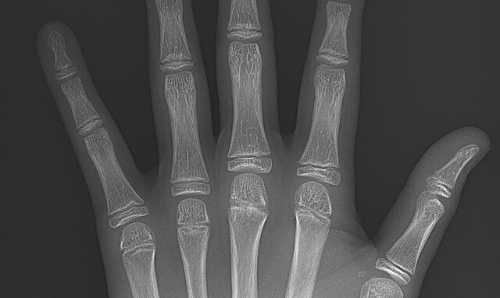Who is a child? Determining age in British and French border policing, 1918 to the present
Through a legal review and contextualised case studies from 20th and 21st centuries Britain and France, this ESRC New Investigator project (2025-2028) aims to offer the first history of border policing which focuses on how age has become increasingly important to migration processes and experiences.

The use of chronological age to categorise populations is one of the key aspects of the modern state (Scott 1999). Its precise determination is essential to a wide array of fields including criminal responsibility and medicine (Schmeling and Black 2010) and has become central to Global North migration regimes.
From the French Constitutional Court’s decision in 2019 to validate the use of bone age tests, to the launch of an Assessment Board by the British Home Office in 2023, it is now one of the most pressing issues in British and French public and policy debates around migration and asylum.
Advocacy groups and practitioners, from human rights organisations to hospital ethics committees, as well as scholars in disciplines as diverse as social anthropology or radiology have frequently questioned the validity of assessment methods and their impacts on migrant well-being (Alshamrani 2019, Bialas 2023, Paté 2023).
These discussions, whilst valuable, often lack a historical dimension that could help better understand the complex situations and processes that shape experiences and responses to displacement.
The project will examine why and how age-based border policing was produced by British and French policy makers, implemented by law enforcement and their intermediaries, and experienced by young migrants. Building on understandings of the border as an increasingly mobile framework (Shachar 2020), it will historicise the often-unquestioned age standards that continue to shape laws, humanitarian responses, and migration experiences.
After reviewing how age has been included in the main immigration laws from the restrictions of the end of the First World War to the generalisation of biometrics and securitised environment today, this project will focus on three case studies:
- An historical case study led by the PL on policing young refugees in the aftermath of World War 2;
- An historical case study led by the PL on family reunification in the decolonisation era;
- An anthropological case study led by the RIA on age-disputed young migrants and their support networks today.
Bringing together a long-term legal review with three case studies will allow for an approach that encompasses wide-ranging spaces, techniques, and experiences of border policing during key periods of British and French modern migration history.
Expanding ongoing collaborations with key protection actors, the project will dialogue with a wide audience of scholars and stakeholders that engage with health and well-being in the context of migration and asylum, as well as young migrants themselves and their networks.
People
- Dr Antoine Burgard
Linked outputs
- Antoine Burgard, 2021, “Contesting childhood: Age assessment and the resettlement of refugee youths in the aftermath of WW2”, History Workshop Journal, 92, 174-193.
